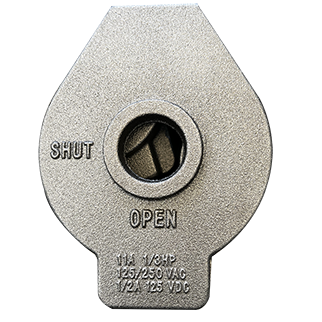- Afrikaans
- Albanian
- Amharic
- Arabic
- Armenian
- Azerbaijani
- Basque
- Belarusian
- Bengali
- Bosnian
- Bulgarian
- Catalan
- Cebuano
- China
- China (Taiwan)
- Corsican
- Croatian
- Czech
- Danish
- Dutch
- English
- Esperanto
- Estonian
- Finnish
- French
- Frisian
- Galician
- Georgian
- German
- Greek
- Gujarati
- Haitian Creole
- hausa
- hawaiian
- Hebrew
- Hindi
- Miao
- Hungarian
- Icelandic
- igbo
- Indonesian
- irish
- Italian
- Japanese
- Javanese
- Kannada
- kazakh
- Khmer
- Rwandese
- Korean
- Kurdish
- Kyrgyz
- Lao
- Latin
- Latvian
- Lithuanian
- Luxembourgish
- Macedonian
- Malgashi
- Malay
- Malayalam
- Maltese
- Maori
- Marathi
- Mongolian
- Myanmar
- Nepali
- Norwegian
- Norwegian
- Occitan
- Pashto
- Persian
- Polish
- Portuguese
- Punjabi
- Romanian
- Russian
- Samoan
- Scottish Gaelic
- Serbian
- Sesotho
- Shona
- Sindhi
- Sinhala
- Slovak
- Slovenian
- Somali
- Spanish
- Sundanese
- Swahili
- Swedish
- Tagalog
- Tajik
- Tamil
- Tatar
- Telugu
- Thai
- Turkish
- Turkmen
- Ukrainian
- Urdu
- Uighur
- Uzbek
- Vietnamese
- Welsh
- Bantu
- Yiddish
- Yoruba
- Zulu
ديسمبر . 11, 2024 07:07 Back to list
make your own heat exchanger
Make Your Own Heat Exchanger A DIY Guide to Efficient Heat Transfer
Heat exchangers are crucial devices used in various industries to transfer heat from one medium to another. They are prevalent in systems like refrigerators, air conditioners, and industrial processes. However, many people may not realize that they can create their own heat exchangers at home or in small workshops. This DIY project can be both educational and practical, providing insights into thermodynamics while enabling the efficient transfer of heat in various applications.
Understanding Heat Exchangers
Before diving into the project, it’s essential to understand how heat exchangers work. At their core, a heat exchanger consists of two fluids that exchange heat without mixing. One fluid, which is at a higher temperature, transfers some of its heat to another fluid that is cooler. The efficiency of a heat exchanger depends on the surface area, the temperature difference between the fluids, and the medium’s flow rates.
Materials Needed
To create a simple heat exchanger, you'll need
1. Copper or Aluminum Tubing Both metals are excellent conductors of heat. 2. Water Container This will hold the heated fluid. 3. Heat Source A stove or hot plate to heat one of the fluids. 4. Pump or Gravity Feed System To circulate the fluids. 5. Thermometer To measure the temperatures of the fluids. 6. Insulation Material To minimize heat loss. 7. Hoses and Connectors For fluid transfer.
Step-by-Step Construction
1. Design Your Heat Exchanger Depending on your application, decide on the design. A simple coil design can be effective. You can create a coil by winding copper or aluminum tubing into a spiral.
make your own heat exchanger

2. Set Up the Water Container Place your water container on your heat source. Fill it with water and heat it up until it reaches your desired temperature.
3. Install the Tubing Immerse the coiled tubing in the heated water. Ensure that one end of the tubing is connected to a cooler fluid source (like a reservoir of cold water), while the other end discharges back into the cooler fluid reservoir.
4. System Connection Connect the pump to the cooler fluid reservoir and the heat exchanger. This will allow for the circulation of the cooler fluid through the tubing to absorb heat from the hot fluid.
5. Insulation Wrap the heat exchanger and the hoses with insulation material to reduce heat loss to the environment. This will improve the efficiency of your heat exchange process.
6. Testing Use a thermometer to monitor the temperatures of both the heated and cooled fluids. Start the pump and watch as the cooler fluid absorbs heat, resulting in a marked temperature increase.
Applications and Benefits
Creating your own heat exchanger can have various practical applications. For example, you can use it in home brewing, where the hot wort can efficiently transfer heat to a cooling liquid, or in aquaponics systems to maintain water temperatures. By understanding the principles behind heat exchangers, you can tailor your design to meet specific needs and enhance the efficiency of various processes.
Conclusion
Making your own heat exchanger is not only a fun DIY project but also an excellent way to grasp fundamental principles of thermodynamics and heat transfer. Whether you are a hobbyist looking to improve efficiency in home projects or a student eager to learn more about engineering concepts, building a heat exchanger can provide practical knowledge and experience in a hands-on environment. With basic materials and a little ingenuity, you can create an efficient device that serves multiple purposes, blending creativity with science in an engaging way.
-
Premium Custom & ODM Vehicle Parts Bulk Order Deals
NewsMay.17,2025
-
Custom Commercial Hot Water Heat Exchangers High-Efficiency Solutions
NewsMay.17,2025
-
Custom Fibre Reinforced Concrete Pipe Bottom Ring Moulds – Buy Durable Solutions
NewsMay.17,2025
-
Steel Reinforced Concrete Pipe Bottom Ring Molds High-Quality & Custom
NewsMay.16,2025
-
Low NOx Condensing Gas Boilers for Domestic Hot Water ODM & Custom
NewsMay.16,2025
-
Buy Cast Silicon Aluminum Hot Water Heat Exchangers Efficient & Durable
NewsMay.15,2025


